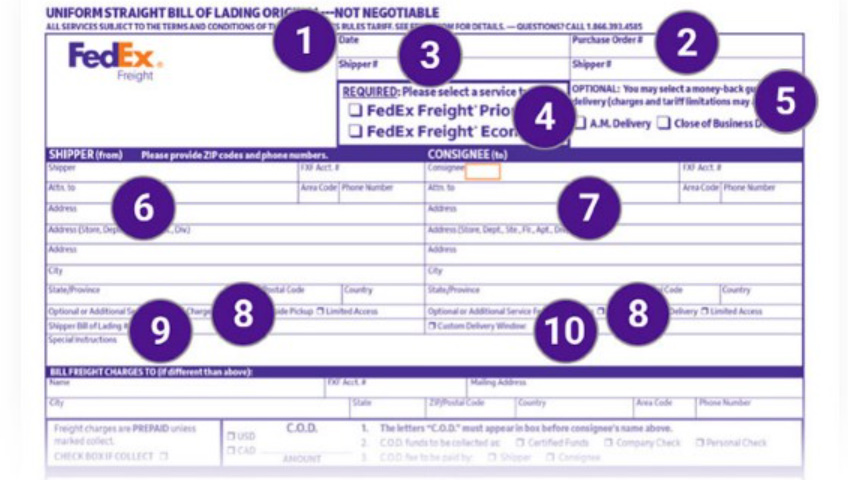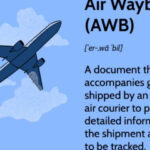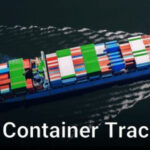Understanding Bill of Lading Tracking
The bill of lading (BOL) is a pivotal document in the world of shipping and logistics. Serving as a contract between the shipper and the carrier, it outlines the terms of the shipment and provides essential details about the goods being transported. Tracking this document is crucial in ensuring that shipments reach their destinations safely and efficiently. In this article, we’ll delve into the intricacies of bill of lading tracking, exploring its importance, methods, challenges, and future trends.
Introduction to Bill of Lading (BOL)
Definition and Purpose of a Bill of Lading
A bill of lading is a legal document issued by a carrier to acknowledge the receipt of cargo for shipment. It serves three main purposes: it is a receipt for the goods, a contract of carriage, and a document of title. This document is vital in international trade, as it ensures that the goods being shipped are properly documented and can be tracked throughout their journey.
The importance of a bill of lading in the shipping industry cannot be overstated. It not only facilitates the movement of goods but also helps in resolving disputes between shippers and carriers, ensuring that all parties involved are clear on the terms and conditions of the shipment.
Key Elements of a Bill of Lading
A bill of lading typically includes several critical pieces of information:
- Shipper and Consignee Details: Names and addresses of the parties involved.
- Description of Goods: Detailed information about the items being shipped, including weight, quantity, and packaging.
- Shipping Instructions: Special instructions related to the handling and delivery of the goods.
- Carrier Information: Details of the company responsible for transporting the goods.
- Terms and Conditions: Legal terms governing the shipment, including liabilities and responsibilities of each party.
Understanding these elements is essential for anyone involved in the shipping process, as they form the basis for tracking the shipment.
How a Bill of Lading Facilitates Global Trade
The bill of lading plays a crucial role in global trade by acting as a bridge between the various parties involved in the shipping process. It ensures that goods are transported according to the agreed-upon terms, and it provides a clear trail of documentation that can be used to track the shipment from origin to destination. This transparency is vital in maintaining the integrity of international trade and ensuring that goods are delivered as expected.
What is Bill of Lading Tracking?
Definition and Importance of Tracking
Bill of lading tracking refers to the process of monitoring the movement of a shipment from its origin to its destination using the BOL as a reference. Tracking is crucial for both shippers and consignees, as it provides real-time information about the location and status of the shipment, allowing for better planning and decision-making.
The ability to track a shipment using its BOL number offers several benefits:
- Improved Visibility: Shippers and consignees can monitor the progress of their shipments, ensuring that they are on schedule.
- Enhanced Communication: Real-time tracking allows for better communication between all parties involved, reducing the likelihood of misunderstandings or delays.
- Increased Security: By tracking the shipment, parties can quickly identify and address any issues that may arise, such as delays, diversions, or losses.
Types of Bill of Lading Tracking Methods
There are several methods available for tracking a bill of lading:
- Manual Tracking: Involves contacting the carrier via phone or email to request updates on the shipment. While this method can be effective, it is often time-consuming and less accurate than electronic methods.
- Electronic Tracking Systems: Many carriers offer online tracking portals where shippers and consignees can enter their BOL number to receive real-time updates on the status of their shipment.
- Mobile Apps: Some carriers provide mobile apps that offer the same tracking features as their online portals, allowing users to monitor their shipments on the go.
- RFID and GPS Technology: Advanced tracking technologies, such as RFID and GPS, provide real-time location data for shipments, offering greater accuracy and visibility.
Steps in the Bill of Lading Tracking Process
Tracking a bill of lading involves several key steps:
- Obtaining the BOL Number: The BOL number is a unique identifier for the shipment and is necessary for tracking purposes.
- Accessing the Carrier’s Tracking System: Shippers and consignees can use the carrier’s website, online portal, or mobile app to enter the BOL number and retrieve tracking information.
- Interpreting the Tracking Data: The tracking system will provide updates on the location and status of the shipment, including any delays or issues that may arise.
- Addressing Common Tracking Issues: If there are problems with the tracking data, such as inaccuracies or delays, it is important to contact the carrier promptly to resolve the issue.
Major Carriers and Their Tracking Systems
Different carriers offer various tracking systems, each with its own features and capabilities. Here’s a brief overview of some major shipping carriers and how they handle BOL tracking:
- Maersk: Offers a comprehensive online tracking portal where users can track shipments by entering the BOL number.
- CMA CGM: Provides an online tracking tool as well as a mobile app for tracking shipments.
- Hapag-Lloyd: Features a robust tracking system that includes real-time updates and detailed tracking information.
Comparing the tracking features of these carriers can help shippers and consignees choose the right provider for their needs.
Advanced Bill of Lading Tracking Features
Real-Time Tracking and Updates
Real-time tracking is a game-changer in the logistics industry, allowing shippers and consignees to receive up-to-the-minute information about the location and status of their shipments. This level of visibility is particularly valuable in time-sensitive industries, where delays can have significant consequences.
Integration with Supply Chain Management Systems
Integrating bill of lading tracking with supply chain management (SCM) systems can streamline the shipping process, improve efficiency, and reduce costs. By combining tracking data with other SCM tools, businesses can gain a comprehensive view of their supply chain, allowing them to make more informed decisions.
Predictive Analytics in Bill of Lading Tracking
Predictive analytics is an emerging technology in the field of bill of lading tracking. By analyzing historical tracking data, companies can predict potential delays or issues before they occur, allowing them to take proactive measures to mitigate risks.
Challenges in Bill of Lading Tracking
Common Issues in Tracking
While bill of lading tracking offers many benefits, it is not without its challenges. Common issues include:
- Lost or Delayed BOL: Sometimes, the BOL can be lost or delayed during transit, making it difficult to track the shipment.
- Inaccurate Tracking Data: Inaccuracies in the tracking system can lead to confusion and delays in the delivery process.
- Limited Access to Tracking Systems: In some cases, shippers and consignees may have limited access to the carrier’s tracking system, making it difficult to obtain timely updates.
Regulatory and Compliance Challenges
Tracking international shipments can be complicated by various regulatory and compliance issues. Ensuring that the shipment complies with all relevant customs and shipping laws is essential for avoiding delays and penalties.
How to Optimize Bill of Lading Tracking
Best Practices for Shippers and Consignees
To optimize bill of lading tracking, shippers and consignees should:
- Ensure Accurate Data Entry: Accurate data entry is crucial for effective tracking. Any errors in the BOL can lead to tracking issues and delays.
- Choose the Right Tracking Technology: Selecting the appropriate tracking technology based on the needs of the shipment can improve visibility and reduce the risk of issues.
- Regularly Monitor and Communicate: Regular monitoring of the tracking data and clear communication between all parties can help prevent and resolve any issues that arise.
Improving Efficiency Through Technology
Leveraging advanced tracking tools and automating the tracking process can significantly improve efficiency and reduce the time and effort required to monitor shipments. Training staff on how to use these tools effectively is also key to optimizing the tracking process.
Case Studies: Successful BOL Tracking Implementations
Several companies have successfully implemented advanced bill of lading tracking systems, leading to improved efficiency and customer satisfaction. Examining these case studies can provide valuable insights into best practices and strategies for effective tracking.
The Future of Bill of Lading Tracking
Emerging Technologies in Tracking
Several emerging technologies are poised to revolutionize bill of lading tracking, including:
- Blockchain: Blockchain technology offers enhanced security and transparency, making it an ideal solution for tracking BOLs in international trade.
- IoT: The Internet of Things (IoT) allows for real-time tracking of shipments, providing greater visibility and control over the shipping process.
- AI and Machine Learning: These technologies can analyze tracking data to predict potential issues and optimize the shipping process.
Industry Predictions and Trends
As the logistics industry continues to evolve, we can expect to see increased adoption of digital BOLs, greater use of predictive analytics, and enhanced transparency and security in the tracking process.
Preparing Your Business for Future Changes
Businesses that want to stay ahead of the curve should start preparing now for these changes by investing in advanced tracking technologies and training their staff on how to use them effectively.
Frequently Asked Questions (FAQs)
What is the purpose of a Bill of Lading?
A bill of lading serves as a receipt, contract of carriage, and document of title in the shipping process. It is essential for documenting the terms of the shipment and ensuring that all parties are clear on their responsibilities.
How can I track my Bill of Lading?
You can track your bill of lading by entering the BOL number into the carrier’s online tracking system or mobile app. You can also contact the carrier directly for updates.
What information do I need to track my BOL?
To track your BOL, you will need the unique BOL number assigned to your shipment. This number is typically provided by the carrier when the shipment is booked.
What should I do if I cannot track my BOL?
If you are unable to track your BOL, it is important to contact the carrier immediately to resolve the issue. They may be able to provide you with additional information or correct any inaccuracies in the tracking system.
How accurate is Bill of Lading tracking?
The accuracy of BOL tracking depends on the carrier’s tracking system and the technology used. While most systems provide accurate and timely updates, occasional delays or inaccuracies may occur.
Can I track a BOL for international shipments?
Yes, most carriers offer tracking services for international shipments. However, tracking accuracy and availability may vary depending on the carrier and the destination country.
Conclusion
Recap of Bill of Lading Tracking
Bill of lading tracking is a critical component of the shipping process, providing shippers and consignees with the visibility and control they need to ensure that their shipments arrive safely and on time. By understanding the various tracking methods, challenges, and technologies available, businesses can optimize their tracking processes and stay ahead of the competition.
The Importance of Staying Updated with Tracking Technology
As the logistics industry continues to evolve, staying updated with the latest tracking technologies and trends will be essential for maintaining efficiency and competitiveness in the global marketplace. By investing in advanced tracking systems and preparing for future changes, businesses can ensure that they are well-positioned for success in the years to come.





